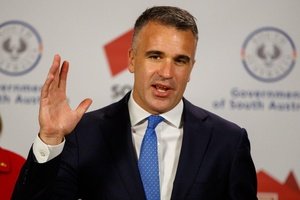The findings were contained in the Pathway to Diversity in STEM report, prepared over 12 months and following consultation with 385 individuals and 94 organisations.
The research found women remained vastly under-represented in the STEM workforce, making up just 15 per cent of engineers, for example. The authors made 11 recommendations for industry reforms to support diversity and reduce harassment and discrimination.
It recommended changes to the education sector, including working with state and territory governments to boost participation in STEM subjects and increasing access to STEM courses, and promoting awareness of potential science and technology careers.
The Federal Government is expected to respond to the recommendations in “coming months”.
The 146-page report, led by Cicada Innovations chief executive Sally-Ann Williams, found only 36 per cent of university students enrolled in STEM courses were women, and they were even more poorly represented in fields such as technology and engineering.
Less than one per cent of Indigenous Australians held a university qualification in a STEM subject, the report found, and fewer than five per cent held a vocational STEM qualification.
The lack of diversity persisted despite warnings of an engineering skills shortage in Australia, and a government goal to employ 1.2 million people in tech-related jobs by 2030.
“Urgent action is needed to create safe and inclusive workplaces that value diverse skills and experiences,” the report said.
“This is critical to attract and retain diverse people in STEM jobs.”
The report’s 11 recommendations also include establishing a dedicated advisory council funded by the government, ensuring organisations are held accountable for “actions to eliminate bullying, harassment and discrimination”, and establishing new programs for under-represented groups.
“The review found that stronger leadership and co-ordination is essential to drive faster and more ambitious progress,” the report said.
“There are many initiatives to increase diversity in STEM, but no central point to bring these together, identify gaps, and measure and share what works.”
Industry and Science Minister Ed Husic said the Government would consider the recommendations over the coming months and was committed to supporting more jobs in fields such as renewable energy, critical minerals and quantum technology.
“We need more people skilled-up to make the most of the opportunities in the growing science and technology jobs market,” Husic said.
“These reports recommend new pathways to get more women and people from diverse backgrounds into STEM careers.”
AAP














